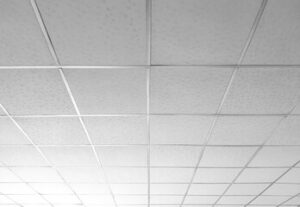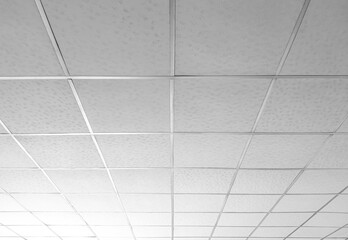Ceilings Perth are interior cladding and fulfil functions such as acoustic conditioning or thermal insulation. They can also reduce the scale of a room or conceal irregularities, installations and piping.
Once commonplace in many homes, painted ceilings are making a comeback. They are a great way to add colour and complement your design aesthetic.
Gypsum board is a common material used to build walls and ceilings in commercial, residential, and institutional buildings. Its fire resistance and sound insulation contribute to building safety and energy efficiency. It also conceals wiring, ductwork, and lighting fixtures.
It has been around for centuries and has adapted to the changing needs of building design. It started as a basic mineral and was recast and reformulated into a wide variety of different materials to suit different building needs. Today, gypsum is the dominant interior finish material in North America.
Gypsum wallboards are lightweight and can be easily cut with a saw or knife. The boards can be shaped to create curved walls or detailed ceiling designs. They are also easy to paint or further decorate. They are also very durable and have a high strength to weight ratio. Gypsum is also a natural mineral and is environmentally friendly. It is available in many forms, including drywall, veneer, and moldings.
Drywall is a popular choice for home ceilings because it is easy to install, lightweight, and affordable. It can withstand the effects of fire, water, and even an earthquake. It also helps in acoustic performance and provides an excellent surface for painting. However, if you want to hang heavy ceiling lights, then it is recommended that you use an additional ceiling frame.
To make gypsum board, the raw material is combined with additives and then formed into sheets. These are then dried in large drying chambers. The process adds to the durability of the boards and reduces the odor of gypsum. The additives can include a retarder (such as EDTA or starch), anti-fungal agent, mildew inhibitor, and foaming agent.
While gypsum is an inexpensive material, it does require some maintenance to ensure proper function and aesthetics. Regular dusting can help to keep it looking like new. You can also clean it using a mild soap or detergent solution. However, you should never use an abrasive cleaner as it may damage the surface. The best way to maintain your gypsum wallboard is to cover it with a protective sheet or canvass to protect it from dust and other debris.
Metal
Metal ceilings provide acoustic benefits, visual appeal and durability. They are available in many shapes and finishes, offering contractors and design stakeholders a range of options for making their vision for interior fittings a reality. They can be used in all types of spaces, including office lobbies and hotel rooms, hospitals, retail and clinics, airport terminals and train stations.
Historically, tin ceilings were made from corrugated iron sheets, dipped in tin in order to protect against corrosion. These days, they are usually manufactured from recycled blackplate steel or aluminum. They can be painted or finished with a powder coating in an infinite number of colors and textures, providing an array of visual possibilities to complement any space.
Most commonly seen in commercial environments, these products are ideal for enhancing architectural features such as columns, arches and ceilings. They also work as an acoustic barrier to reduce noise transmission and echo, resulting in enhanced occupant comfort. In addition, they can hide plumbing, electrical and mechanical utilities in plenum areas.
The materials that are used to make these panels also provide durability and resistance against fire, moisture and other environmental conditions. They can withstand heavy loads, and can be configured into unique designs that are ideal for specific applications. For example, fire-resistant metal ceilings are designed to meet certain constructional fire safety requirements, while ball impact-resistant systems allow the use of lower ceiling heights and create a sense of spaciousness in rooms.
Modular metal ceilings are also a great choice for base builds because they can be easily demounted and are highly durable. They do not sag or stain, and are easy to clean and resistant to chemical exposure. They also support indoor air quality by preventing mold and mildew growth.
In addition to standard colors, perforation patterns are available in a wide variety of styles, allowing designers to transform their metal ceilings into one-of-a-kind pieces of art. These perforations also affect acoustic performance, depending on the pattern.
Another option for acoustical comfort is to choose a product that includes sound-absorbing infill. This material is pre-formed at the time of manufacture, and can be incorporated into selected grid and panel types.
Wood
Wood ceilings are a popular choice for homeowners and designers looking to add a touch of warmth and texture. The variety of wood species, finishes, and installation patterns allows for an endless array of design possibilities. If you’re considering a wood ceiling, be sure to choose a product with prefabricated panels for easier installation. This will help prevent sagging and ensure that the planks are securely attached to the ceiling grid. There are also several options for wood planks that can be installed without the need for a grid system. These products are typically direct attach and feature tongue-and-groove edges for a clean, modern look.
A wood ceiling can be an eye-catching focal point in any room, especially if you choose to accent it with a dazzling light fixture. It can also create a more modern look when used as a backdrop for a sleek, contemporary room. You can even use it to create a rustic or country-style look, with the right accents like a wooden chandelier or an oversized wooden hutch.
In addition to enhancing the aesthetics of a space, wood ceilings can also provide sound acoustics and help reduce energy costs. Since wood is a natural material, it absorbs and diffuses sound very well. This can help reduce the noise level in a space, and it can make a room feel more spacious. It can also be an effective insulator, keeping the room warmer during the winter.
Wood ceilings can be a challenging DIY project, especially for those who are not experienced in carpentry or DIY projects. It is important to consult a professional before installing a wood ceiling, because improper installation can result in moisture damage and costly repairs. Wood ceilings can be prone to swelling, warping, or rotting when exposed to excess humidity. Proper ventilation and sealing are critical for preventing these problems.
Another advantage of a wood ceiling is that it can be painted to match any color scheme. However, it is important to note that wood ceilings require more frequent maintenance than other types of ceilings. It is important to sand and repaint them regularly, as the wood can discolor or deteriorate over time. In addition, you must be careful not to paint a ceiling too close to the walls or other fixtures, because it can cause water damage and staining.
Tile
Ceiling tiles are thin square or rectangular coverings manufactured from hard-wearing material such as stone, metal, baked clay, or glass. They are generally fixed in place in an array to cover roofs, floors, walls, edges and other surfaces. They can also be used as a decorative element to enhance the visual appeal of an interior space.
A variety of types and styles are available to meet the unique needs of commercial, healthcare, educational, industrial, and other facilities. Some of the most important characteristics to consider are fire ratings, acoustic control, and aesthetic variety.
For instance, a tile ceiling can provide excellent acoustic control, which can help reduce noise levels in large open areas. This can lead to a more comfortable and productive work environment. Additionally, tile ceilings are available in a variety of colors and textures to complement the design theme of any facility.
Some ceiling tiles can also offer acoustic and thermal insulation, which can improve energy efficiency. In addition, many are available with high light reflectance ratings to help make rooms appear brighter. Some of these materials can even be made to support sustainable building initiatives by containing recycled content.
Before installing ceiling tiles, it is essential to thoroughly clean the surface. A broom or vacuum cleaner should be used to remove dust and debris, and if necessary, water can be applied to the surface to remove stubborn stains or oily deposits. After a thorough cleaning, the surface should be completely dry before beginning work.
Installing a tile ceiling can be accomplished by using either surface mount or drop installation systems. Surface mount systems use clips that attach to the edge of a panel and snap into place in a grid system. Drop systems use a grid of metal channels suspended on wires from an overhead structure and filled with lightweight ceiling tiles that “drop” into the system.
To begin the process of installing a new tile ceiling, start with the two corner wall corners and cut border tiles to fit along each edge. When installing the border tiles, be sure to cut them so that they are not less than half of a full size tile wide. Then, position the border tiles on the ceiling and work outwards to fill in the remaining spaces.



